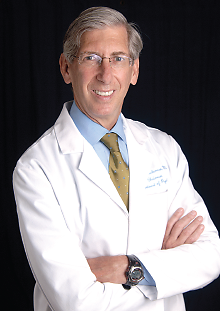The Couch.
Such is the common visual element in every cartoon about psychiatry—along with a (usually) middle-aged, balding, goateed white man playing the role of the psychiatrist.
That may have been a somewhat accurate portrayal of the psychoanalytic wave that dominated psychiatry in the 1950s, but hardly reflects the state of the profession today, said former APA President Jeffrey Lieberman, M.D., the Lawrence C. Kolb Professor and Chair of Psychiatry at the Columbia University College of Physicians and Surgeons and director of the New York State Psychiatric Institute.
“That image is an anachronism, an expression of vestigial attitudes of the past,” said Lieberman in an interview with Psychiatric News. “It also expresses a lot of the stigma and skepticism about psychiatry that still exist today.”
Lieberman will discuss his view of the development of psychiatry as a branch of medicine at APA’s 2015 annual meeting in Toronto in the session “The Notorious Past and Bright Future of Psychiatry.” The session will be held on Monday, May 18, at 1:30 p.m. in Room 106 of the North Building in the Toronto Convention Centre.
Psychiatry was a late bloomer and did some unfortunate things while it was growing up scientifically, he said.
“That wasn’t because our predecessors were less intelligent or less hard working or less committed to their mission of health care,” he said. “It was because the brain was a much more complicated organ to understand, and its illnesses fall among the functions of the brain that are among the most highly evolved in the entire animal kingdom. So we weren’t in a position to understand them until recently, when we had the necessary scientific sophistication and technology.”
As the 20th century dawned, hypotheses about the causes and treatment of mental illness were mostly dead ends. Psychiatrists might observe patients but could do little to help them. When Sigmund Freud said that early life experiences and inner conflict explained human behavior and mental illness, a door seemed to open to a new age.
Why did Freud’s ideas grip the American mind so firmly?
“Freud was an intellectual genius and developed a captivating theory of behavior,” said Lieberman. “But he was also a brilliant, eloquent communicator, and so his ideas had a tremendous power.”
The impact of those ideas in America was due to a tragic turn of history, as many of Freud’s mostly Jewish disciples fled Nazism in the 1930s. The psychoanalytic viewpoint quickly filled the empty space in psychiatry and was firmly entrenched in the profession both intellectually and politically from the 1940s to the 1960s, said Lieberman in his recent book, Shrinks: The Untold Story of Psychiatry (Little, Brown and Company). Merely questioning Freudian dogma placed one outside the pale of the mainstream in those years.
That began to change in the 1960s, as did so many other aspects of American life. Lieberman’s own career mirrored those changes. Like many others of his generation, he was attracted to the field initially by Freud’s ideas. But he entered residency in the early 1970s just as psychopharmacology was gaining critical traction and technology was starting to make brain research a viable direction of inquiry.
“It was a new, fast-moving area,” he said. “It was intellectually stimulating, and you could participate and generate knowledge.”
The era of biological psychiatry had begun, although it never dominated the field as thoroughly as psychoanalysis, and psychoanalysis never disappeared. Psychiatry today has developed a broader view of the illnesses it treats.
“Contemporary psychiatrists hold a pluralistic view of mental illness that embraces neuroscience, psychopharmacology, and genetics—but also wield psychotherapy and psychosocial techniques in order to understand patients’ unique histories and treat their conditions in an individualized way,” he wrote.
Science will drive psychiatry in the future, he said, as it brings new treatments and diagnostic tests.
“Genetics will peel the onion of psychiatric diagnoses and will redefine syndromal-based diagnoses that have existed for decades,” he said.
Roles for psychiatrists will also change as they work more with allied mental health professionals in group practices, clinics, and health systems to diagnose patients and develop treatment plans while delegating more treatment to others and working closely with primary care systems.
“But psychiatrists will not become obsolete because no one else is trained to do what we do,” he said. ■

